#Arts course books of India
Text
Fandom Trumps Hate 2024!

Looking for a scene drawn for your story? A piece to help inspire you to write a fic? A new icon? How about covers for your story with full print-ready Graphic Design service? Maybe a pinup, or some trading cards (up to 10)?? Maybe a gift for someone, or just your vision of a character(s) (up to 3 character sheets) for your AU?
Well, that’s just some of the stuff I’m willing to offer for this year’s @fandomtrumpshate Charity Event! FTH is a WONDERFUL community project that supports amazing non-profits through donations for fanworks via this wonderful annual event!
I am participating for my fifth year by offering 2 fanarts for y’all in either the BBC Sherlock or Good Omens fandoms, starting at 20$ for the non-profit of your choice!
Here are some past FTH pieces I’ve done, if you’re interested in seeing the scope of the work you would be getting from me:
2020:
GO - :FTH 2020 – Lagniappe for Big_Edies_Sun_Hat:
GO - :FTH 2020 BONUS – Réveillon for Big_Edies_Sun_Hat:
2021
SH - :This Year: (FTH #1 for @discordantwords)
SH - :Burlesque Johnlock: (FTH #2 for @ohlooktheresabee)
2022
SH – :A Quiet Moment: (FTH #1 for @totallysilvergirl)
SH – :Against the Wall: (FTH #2 for @anarfea)
2023
SH – :Let Me Come to You: (FTH #1 for ShakespearelovedLadyMacbeth)
SH – :Couch Cuddle: (FTH #2 for @discordantwords)
SH – :More Every Minute: (FTH #3 for @totallysilvergirl)
And of course, you can browse all my art to see my range:
@stephdrawsjohnlock
stephdrawsfanart on Instagram
@stephratte (Primary Multifandom Art Blog)
stephratte on deviantART
I will draw any ship from any of the above fandoms. All my work is done as a hi-res 3000x3000 print-ready piece in Procreate. Traditional media (markers, India ink, and pencils) is also available if you prefer, done on illustration or marker paper at the paper’s size, with the option of acquiring the original if you choose. I will also do it at a requested size if you have a preferred format for something specific (like a book cover or a comic panel). Feel free to DM me if you have any questions.
The browsing begins on Feb. 26, and the bidding opens on March 1! I hope I once again get a chance to do a couple fantastic pieces for y’all!! I love doing this so much, so keep an eye out for my info post soon once it’s official!
122 notes
·
View notes
Text
Preserving Leaf Paintings in an Anglo-Indian Commonplace Book, 1822-1825
Hello, I’m Alexa Machnik, a third-year graduate student at the Conservation Center, Institute of Fine Arts, NYU. I first came to the Barbara Goldsmith Preservation & Conservation Department in Fall 2022 as a student in the graduate course, Conservation in Context, taught by Laura McCann, Director of Preservation. During this course, we delved into the world of library conservation, exploring the value systems that guide preservation decision-making and treatment action in academic research libraries. One of my class projects involved rehousing delicate leaf paintings from an early 19th-century commonplace book, or friendship album, part of the Fales Library holdings in the Special Collections at NYU Libraries (figs. 1-2) [1]. In honor of Preservation Week, I will share the intriguing history of the book and discuss the decisions that were made to preserve the leaves.

Figure 1 [left]: Front cover of the commonplace book, bound in gold-tooled red morocco leather.
Figure 2 [right]: Ownership label of “Jane Harriet [Blechynden]” on front marbled pastedown.
The book in question was compiled by Jane Harriet Blechynden (1806-1827) in England between 1822 and 1825. It holds her personal collection of handwritten and acquired materials, with contributions from her sisters, Emma and Sarah, who wrote original poems about sisterhood, separation, and their Anglo-Indian ancestry. The three women were the daughters of a British merchant residing in Calcutta, and while born in India, they were educated in England [2]. There is not a great deal known about Jane Harriet’s life in England, but her impending return to India in 1825 is documented in an emotional verse by Emma (fig. 3):
“Thus in parting my sister we’re breaking a link / Which may ne’er be united again / And firm as that chain was ‘tis painful to think / That absence may send it twain.”

Figure 3: Excerpt from the original poem, “Parting and a Meeting,” signed by Emma.
Jane Harriet’s book offers insights into her personhood, social connections, and sensibilities as an artist and collector. In addition to written entries, she inserted a compendium of acquired materials–pressed flowers, her own original drawings, and numerous paintings–between pages of the book (figs. 4-6).

Figures 4-6 [left to right]: A small sampling of the ephemeral treasures found in the book, including a dried pressed flower, a drawing on pith possibly by Jane Harriet, and a cut-paper silhouette.
Notably, six of these paintings are executed on the dried leaves of the Bodhi tree, a sacred plant indigenous to Asia with distinct spade-shaped, long-tipped leaves (fig. 7) [3]. Although leaf painting has origins in Buddhist traditions, by the time Jane Harriet collected her leaf paintings, it had already evolved into a form of Chinese export art in Europe. Her leaves depict secular scenes of contemporary life in China and botanical subjects, which are typical of the export genre (fig. 8). Their inclusion in the book implies that Jane was among the many people who partook in the avid collecting of China trade goods during the first few decades of the 19th century, a time when European fascination for Chinese culture and art was at its peak.

Figure 7: A leaf painting, as found loose in the book and partially lifted to show the thin, translucent nature of the leaf support.

Figure 8: Another leaf painting from the book, oriented with the leaf tip at the bottom of the image, depicting flowers and a butterfly.
The initial rush of excitement that I felt at finding the leaf paintings soon turned to concern as I gave thought to their long-term preservation at NYU Libraries, where researchers are expected to handle the book. The leaf paintings were loose in between the pages, which raised a series of “what ifs” about the potential dangers they could encounter. What if the leaves slip from the book? What if they bend or break as the pages are turned? What if the painted surfaces become abraded? The paintings were made with opaque pigment-based watercolors on exceptionally delicate, skeletonized leaves that have been primed with a thin organic coating. Despite being intact, their inherent fragility means that they are vulnerable to even the slightest touch. After considerable discussion, the Conservation Unit decided that in order for the leaf paintings to be preserved and safely accessed by researchers, they should be housed separately from the book.
I thoroughly examined the condition of the leaves and the painted surfaces in order to make a housing recommendation. Despite some minor damage, all were in stable condition. Thus, the ideal housing would provide support to prevent any further damage, such as paint loss and leaf breakage, and at the same time allow the leaves to maintain their translucency. To achieve this, I opted to mount them in double-sided window mats with a support made from clear polyester film, or Mylar® [4]. The addition of the Mylar® would not only create a stable surface for the leaf paintings but also enable the viewing of both sides (fig. 9).
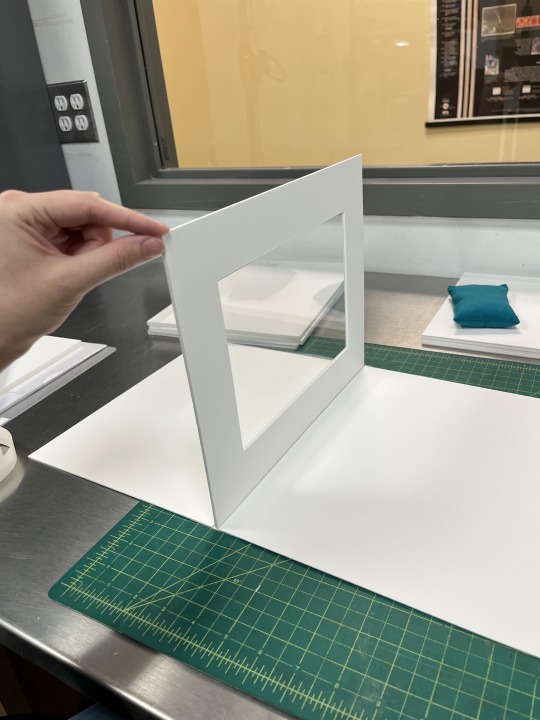
Figure 9: View of the double-sided window mat with a Mylar® support.
My next challenge was to figure out how to mount the leaves onto the Mylar® support without the use of adhesive [5]. After consulting with conservation staff and creating mock-ups, short, discreet Mylar® tabs were selected as the best option to secure them into place (figs. 10-11). For this process, I positioned a single leaf painting onto the support and selectively placed the tabs around its perimeter, making sure the tabs did not overlap any areas of paint. I then used a handheld spot-welding pen to fuse the tabs to the support. Since this process was done in-situ, near the leaf, it required lots of precision practice and encouragement from colleagues before I felt confident enough for the task.

Figure 10: Detail of a mounted leaf painting. Notice that the Mylar® tabs are welded just outside the leaf and extend minimally over the edges, holding it in place with gentle pressure.

Figure 11: The backside of a mounted leaf painting viewed through the Mylar® support. This gives researchers access to the painting’s verso, where an underdrawing and other signs of artistic process can be discerned.
At the time of writing this post, I successfully housed the six leaf paintings in their double-sided window mats (figs. 12-13). This housing project, while complete, is just one part of the ongoing effort to preserve the commonplace book, and the Conservation Unit is continuing work on other elements of the book to ensure its safe return to Special Collections.
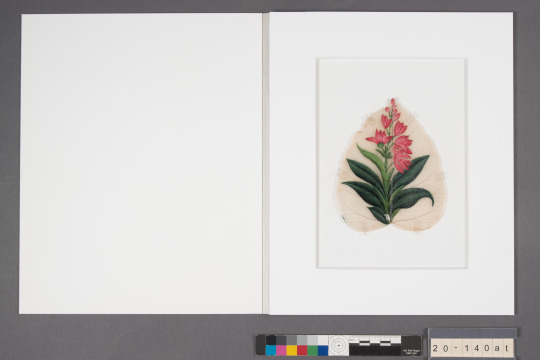
Figure 12: Example of the completed housing, showing the front of a leaf painting.

Figure 13: Back of a leaf painting.
Though my involvement in the project has come to an end, I have gained a very special appreciation for the commonplace book and the preservation challenges it presents. The experience of learning directly from NYU Libraries Special Collections was especially invaluable, providing me with opportunities to participate in complex decision-making processes unique to large research libraries driven by user needs. Before signing off, I’d like to extend my gratitude to my supervisors, Laura McCann, Director, and Lindsey Tyne, Conservation Librarian, and the entire team at the Barbara Goldsmith Conservation Lab for their unwavering support and enthusiasm throughout this project. Thank you all very much!
Notes:
[1] A commonplace book is a centralized place for an individual to record information, whether it be their personal thoughts or quotes from outside literary sources. Friendship albums, by contrast, contain handwritten entries from the family, friends, or acquaintances of the owner (often female). Both forms of commonplacing sustained popularity in Europe and America throughout the 19th century. To learn more about this fascinating literary genre, see Jenifer Blouin, “Eternal Perspectives in Nineteenth-Century Friendship Albums,” The Hilltop Review, Vol. 9, Issue 1 (2016) and Victoria E. Burke, “Recent Studies in Commonplace Books,” English Literary Renaissance, Vol. 43, No. 1 (2013), 153-177.
[2] Much of what is known about Jane Harriet (also known in her family as Harriet) comes from the Blechynden papers in the British Library (Add. Mss. 45578-663). This large holding contains the diaries of her father, Richard (Add. Mss. 45581-653), and older brother, Arthur (Add. Mss. 45654-61). For a secondary account of the Blechynden household, see Peter Robb, Sentiment and Self: Richard Blechynden’s Calcutta Diaries, 1791-1822 (New Delhi: Oxford University Press, 2011).
[3] Michele Matteini, “Written on a Bodhi tree leaf,” Anthropology and Aesthetics, Vol. 75-76 (2021), 45-58.
[4] The design of the double-sided mats is based on an instructional guide made available by the Library of Congress. “Double-Sided Mat,” Library of Congress, accessed 1 February 2023.
[5] We chose not to use adhesives or traditional paper-hinging techniques to mount the leaf paintings for several reasons. As noted, the paintings are on fragile, non-paper-based supports that have an organic coating, which may be derived from plant gum. The leaf supports are thin, translucent, and highly vulnerable to breakage, so applying hinges directly with adhesive might permanently alter their appearance or risk further damage to the leaves over time, especially if they need to be removed from the housing in the future.
Photographs: Alexa Machnik
#NYULibraries#NYUSpecialCollections#FalesLibrary#nyuifa#nyuart#librarypreservation#libraryconservation#collectionscare#artconservation#paperconservation#bookconservation#artpreservation#preservingthepast#PreservationWeek#preservationweek2023
208 notes
·
View notes
Note
ok so i am very much uninformed on politics, i decided at a younger age that i wasn't interested in it and therefore would not read or keep myself particularly informed about it. obviously this is a bad idea, and i want to change and keep myself informed on actual politics and well, abstract[?] (wrong word but cannot think of another, basically mean like. knowing which political .. stance ?? [idk. like marxist or communist or whatever] i might be.) ones as well. what's a good place to get started here? where do i look for actual politics going on in india since i'm pretty sure ndtv or whatever isn't exactly the best source? or maybe it is? idk, like i said i'm pretty uninformed on the matter but would like to learn more
so one thing is, in india you have to accept the media landscape is just dire because being a journalist with integrity is a bit like signing up to have your life ruined. all major media has been bought by hindutva already. what you have to do is more learn to read between lines, understand people's motivations, which is a matter of practice. a good way to start is to read analysis (not news reports) of the same incident in different media and you'll start noticing patterns. even more important imo is to talk and bounce ideas with a friend at a similar place as you or someone interested in politics who won't overwhelm you with their perspective. you can try online but idt its safe or advisable anymore to do that experiment online. i had debate club in university (sad) and some socialist reading groups (better) after. the thing is this journey to self education is kind of personal and im also not pedagogically oriented or trained? so lots of first person description instead of prescriptions.
i still check what's up on ndtv because it gives me a good pulse of what english language media and liberals are thinking. major newspapers i scan hindu and the indian express sometimes. online i have a look at newslaundry (also has some youtube content) and the wire, they're reader supported and haven't turned full hindutva yet. i read longer form things in the caravan and epw, but these are subscription based. i keep tabs on the latest round of hindutva fake news when alt news debunks it.
for the abstract things, i literally did an online course bc i was frustrated by what all the liberal arts grads seemed to already agree on. i did ian shapiro's moral foundations of politics which is available online as both youtube lectures and a textbook. if you want to go that route feel free but it's not necessary, you can also try to read the entries on wikipedia or stanford encyclopedia of philosophy (more expertise) when you encounter something unfamiliar and build up like that. podcasts like bbc in our time will often interview academics to give intros to many political philosophy concepts and thinkers. whatever your learning style supports! i think the important thing is to find something you are actually interested in, and take that tack. i like history, so i might read books about historical revolutions or historical forms of organising society or listen to podcasts like mike duncan's revolutions.
For communism the usual starting points are these very short pamphlets:
Principles of Communism by Engels
The Manifesto of the Communist Party by Marx
Wage-Labor and Capital by Marx
Socialism: Utopian and Scientific by Engels
feel free to ask for more specific questions!
133 notes
·
View notes
Text
Online History Short-Courses offered by Universities Masterpost
Categories: Classical Studies, Egyptology, Medieval, Renaissance, The Americas, Asia, Other, Linguistics, Archaeology
How to get Coursera courses for free: There are several types of courses on Coursera, some will allow you to study the full course and only charge for the optional-certificate, for others you will need to audit it and you may have limited access (usually just to assignments), and thirdly some courses charge a monthly subscription in this case a 7 day free trial is available.
Classical Studies 🏛️🏺
At the Origins of the Mediterranean Civilization: Archeology of the City from the Levant to the West 3rd-1st millennium BC - Sapienza University of Rome
Greek and Roman Mythology - University of Pennsylvania
Health and Wellbeing in the Ancient World - Open University
Roman Architecture - Yale
Roman Art and Archeology - University of Arizona
Rome: A Virtual Tour of the Ancient City - University of Reading
The Ancient Greeks - Wesleyan University
The Changing Landscape of Ancient Rome. Archeology and History of Palatine Hill - Sapienza University of Rome
Uncovering Roman Britain in Old Museum Collections - University of Reading
Egyptology 𓂀⚱️
Egypt before and after pharaohs - Sapienza University of Rome
Introduction to Ancient Egypt and Its Civilization - University of Pennsylvania
Wonders of Ancient Egypt - University of Pennsylvania
Medieval 🗡️🏰
Age of Cathedrals - Yale
Coexistence in Medieval Spain: Jews, Christians, and Muslims - University of Colorado
Deciphering Secrets: The Illuminated Manuscripts of Medieval Europe - University of Colorado
Enlightening the Dark Ages: Early Medieval Archaeology in Italy - University of Padova
Lancaster Castle and Northern English History: The View from the Stronghold - Lancaster University
Magic in the Middle Ages - University of Barcelona
Old Norse Mythology in the Sources - University of Colorado Bolder
Preserving Norwegian Stave Churches - Norwegian University of Science and Technology
The Book of Kells: Exploring an Irish Medieval Masterpiece - Trinity College Dublin
The Cosmopolitan Medival Arabic World - University of Leiden
Renaissance ⚜️🃏
Black Tudors: The Untold Story
European Empires: An Introduction, 1400–1522 - University of Newcastle
The Mediterranean, a Space of Exchange (from Renaissance to Enlightenment) - University of Barcelona
The Life and Afterlife of Mary Queen of Scots - University of Glasgow
The Tudors - University of Roehampton London
The Americas 🪶🦙🛖
History of Slavery in the British Caribbean - University of Glasgow
Indigeneity as a Global Concept - University of Newcastle
Indigenous Canada - University of Alberta
Indigenous Religions & Ecology - Yale
Asia 🏯🛕
Contemporary India - University of Melbourne
Introduction to Korean Philosophy - Sung Kyun Kwan University
Japanese Culture Through Rare Books - University of Keio
Sino-Japanese Interactions Through Rare Books - University of Keio
The History and Culture of Chinese Silk - University for the Creative Arts
Travelling Books: History in Europe and Japan - University of Keio
Other
A Global History of Sex and Gender: Bodies and Power in the Modern World - University of Glasgow
A History of Royal Fashion - University of Glasgow
Anarchy in the UK: A History of Punk from 1976-78 - University of Reading
Biodiversity, Guardianship, and the Natural History of New Zealand: A Museum Perspective - Te Papa
Empire: the Controversies of British Imperialism - University of Exeter
Great South Land: Introducing Australian History - University of Newcastle
Indigeneity as a Global Concept - University of Newcastle
New Zealand History, Culture and Conflict: A Museum Perspective - Te Papa
Organising an Empire: The Assyrian Way - LMU Munich
Plagues, Witches, and War: The Worlds of Historical Fiction - University of Virginia
Russian History: from Lenin to Putin - University of California Santa Cruz
Linguistics 🗣️
Introduction to Comparative Indo-European Linguistics - University of Leiden - Coursera version
Miracles of Human Language: An Introduction to Linguistics - University of Leiden
Archeology 💀
Archeoastronomy - University of Milan
Archaeology and the Battle of Dunbar 1650 - Durham University
Archaeology: from Dig to Lab and Beyond - University of Reading
Archeology: Recovering the Humankind's Past and Saving the Universal Heritage - Sapienza University of Rome
Change of Era: The Origins of Christian Culture through the Lens of Archaeology - University of Padova
Endangered Archaeology: Using Remote Sensing to Protect Cultural Heritage - Universities of Durham, Leicester & Oxford
Enlightening the Dark Ages: Early Medieval Archaeology in Italy - University of Padova
Exploring Stone Age Archaeology: The Mysteries of Star Carr - University of York
Forensic Archaeology and Anthropology - Durham University
Roman Art and Archeology - University of Arizona
The Changing Landscape of Ancient Rome. Archeology and History of Palatine Hill - Sapienza University of Rome
#side note: most of the universities that offer courses in English on these sites are European or American(USA)#so the lack of courses about Asia (other than Japan) The Americas and Africa is not because of me#history#historical#classical studies#ancient Greece#ancient Rome#pompeii#Egyptology#pharaoh#ancient Egypt#medieval#medieval europe#Medieval Arabia#Renaissance#Tudor#the tudors#history courses#courses#linguistics#archeology#archeology courses#resources#free resources
161 notes
·
View notes
Text
Baker!Techno x reader
Wont ever stop plum.
Warning: beware of the honeycomb, PTSD, hinted drugging, mention of gunshots.
Your eyes blink open taking in the sight of the white sheer curtains flowing softly in the warm breeze, the feel of the gentle cotton sheets against your body did nothing to pull you out of your hazy sleep.
Things you don’t remember, places you’ve never been, a true dream if you’ve ever had one full of fiction and mistrustful information. It could never be true so you don’t dwell on the fragments of you in the desert that are fracturing your already fragile state of mind.
Your delicious baker always tells you not to think too much, with everything you’ve been through all you should be doing is relaxing.
But what had you been through is the real question.
You breathe deeply taking in the breath taking smell of cinnamon sweet buns downstairs, ears twitching at what you think is the radio playing in the background. Someone muttering something about India, hotel alpha victor echo, hotel echo Romeo, you don’t know not paying attention to such frivolous matters.
Instead you roll over onto your side eyes going to the French doors that are open giving you a full view of the blue sky, sun shining but not high enough for it to be midday. You recon it’s nine, possibly ten. The smell of fresh cut grass tells you that Techno had been up since about six am to do all the chores before you could even offer.
He was very passionate about you finishing the last two books of your favourite series and you can’t do that if you’re distracting yourself with silly things like chores. His words, not yours.
Breathing deeply once more not wanting to spike your heart rate, somehow your man always knows. It’s rather strange but it’s another thing on the list of things you shouldn’t dwell on. Catching a wiff of rain in the air, you can tell that the vineyard, you have as your beautiful back garden, got the drink it desperately needed last night.
Finally thinking you’ve given your baker enough time to ice those sweet buns you pull yourself from the sheets however groggy, you manage to slip on a silk robe and stagger your way through your home.
Your kitchen was Techno’s pride and joy, besides you of course, he designed it and got some friends of his to help build it. It is the definition of a baker’s dream, equipped with a state of the art pizza oven and four electric ovens for his exquisite bakery dishes adding a crisp texture, to delightful cookies and puffs.
Your tired eyes scan the kitchen quickly latching onto the sight of sixteen sweet buns waiting for you. You pad over ready to reach for one of the freshly iced cinnamon buns only to be stopped by your baker.
“Ah ah ah, this first.” A smooth piece of golden honeycomb appears in front of your face instantly making you salivate. You take it putting it to your lips, taking small licks before sucking on an edge missing the way Techno groans under his breath.
“Take such good care of me.” You mumble mouth a little full, eyes fluttering shut with a soft hum.
“Won’t ever stop plum.” His lips skim your forehead. He’s so sweet and so sincere. He’s genuine and loving. Everything he is always is. Not even a hint of darkness swirling in his eyes. Not even a spec.
Gunshots and the smell of dusty sand echo through his senses as his darkening orbs dart around your face while you suck on the sweet honeycomb.
“How’d you sleep plum?” He asks an arm curling around your waist pulling you against his warm body. With no shirt covering his hairy chest and a bit of pudge from all the taste testing. Wearing a simple pair of basketball shorts you whimper at the feel of him pressed up against you.
You nod eyes still closed, taking more of the honeycomb into your mouth to suckle on laying your head on his chest too. “Maybe you could use a bit more of it hm?” He hums in your ear before sucking your earlobe into his mouth, raking his teeth over it. “I think that’s a good idea, why don’t we cuddle for a while hmm?”
You nod, feeling disoriented letting Techno guide you to the bed you’d just left. His thick fingers stroking your head gently as he slips in behind you, holding you tight. “Let it happen plum.” He whispers, and you do eyes fluttering shut. All memories of that desert that had started to form in your head, gone.
#squishycheekanon#squishycheekanonanswer#asks are appreciated#beefy!techno#squishtalks#squishysneekpeaks#squishyreblogs#baker!techno x plum#baker!techno x reader#baker!techno#military!techno
62 notes
·
View notes
Text


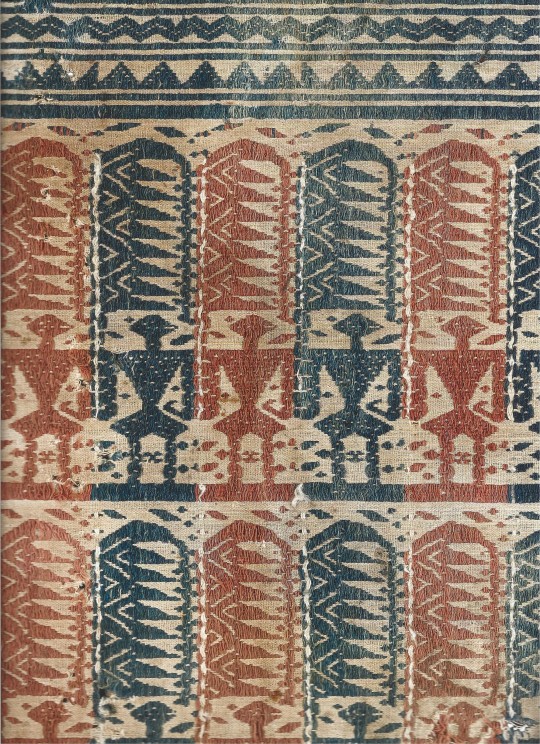


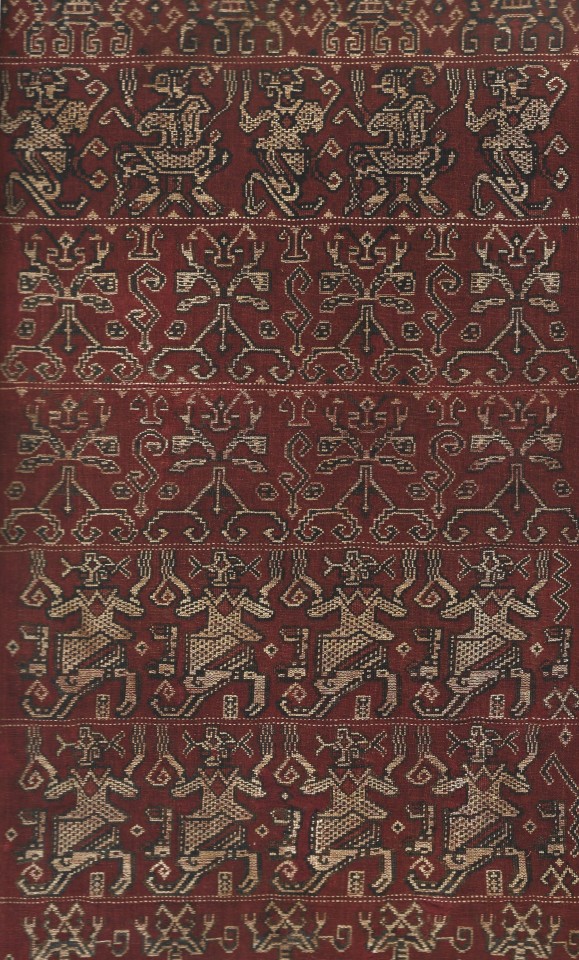
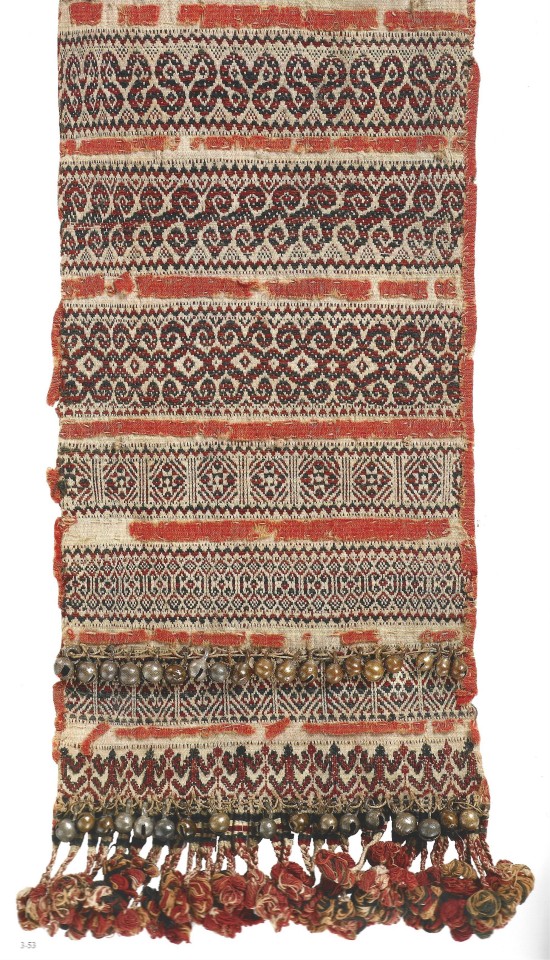


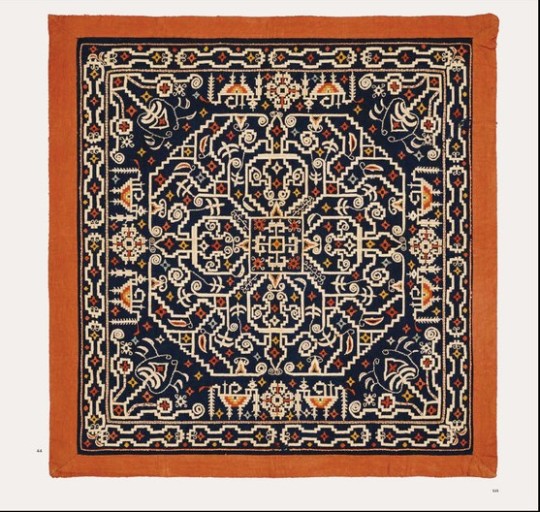
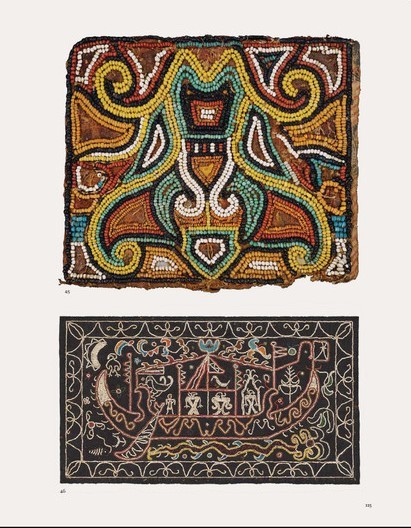
Textiles of Indonesia
The Thomas Murray Collection
Contributors: Lorraine Aragon, Joanna Barrkman, Chris Buckley, Kristal Hale, Valerie Hector, Janet Alison Hoskins, Itie van Hout, Eric Kjellgren, Fiona Kerlogue, Brigitte Khan Majlis, Robyn Maxwell, Thomas Murray, and Sandra Sardjono
Prestel, London 2021, 534 pages, 26,5x35cm, ISBN 9783791387659
€112,00
email if you want to buy [email protected]
Gathered over the course of four decades, the Thomas Murray collection of Indonesian textiles is one of the most important in the world. The objects comprise ritual clothing and ceremonial cloths that tell us much about the traditions of pre-Islamic Indonesian cultures, as well as the influences of regional trade with China, India, the Arab world, and Europe. As with the earlier volume, Textiles of Japan (Prestel, 2018), the book focuses on some of the finest cloths to come out of the archipelago, presenting each object with impeccable photographs. Geographically arranged, this volume pays particular attention to textiles from the Batak and the Lampung region of Sumatra, the Dayak of Borneo, and the Toraja of Sulawesi, as well as rare textiles from Sumba, Timor and other islands. Readers will learn about the intricate traditions of dyeing, weaving, and beading techniques that have been practiced for centuries. Original texts by international experts offer historical context, unspool the mysteries behind ancient iconography, and provide new insights into dating and provenance. At once opulent and scholarly, this book arrives at a moment of growing interest in Southeast Asian culture and carries the imprimatur of one of the art world's leading collectors.
02/11/23
#Textiles Indonesia#Thomas Murray Collection#Batak and Lampung region#Sumatra#Dayak Borneo#Toraja Sulawesi#Sumba textiles#Timor Textiles#Indonesian Textiles#textiles books#fashionbooksmilano
22 notes
·
View notes
Text
The Yoga of Happiness and Bliss - Light On Ananda Yoga - Spiritual Awakening Radio Podcast

Sant Kirpal Singh: "There lived in India Swami Shiv Brat Lal, a disciple of Rai Saligram [successor of Swami Ji Maharaj], who was advanced in spirituality but he gave out all these things about which I am now referring, in story form. He would bring out these very teachings of the Master in some novel like form in the Urdu language, of course, not in English. He did a splendid work, having brought out two, three thousand books, I think. Somewhere he takes the soul as a prince so that he may bring out a story with all these teachings given here. He did a very wonderful work. He has now passed away. He loved me much. I loved him too. He loved Master too [Hazur Baba Sawan Singh]. In all love, you see, he wrote many stories like that. Novels -- very interesting -- in which all these teachings of the Saints were included -- given out. That will draw many people to the Truth." (The Light of Kirpal, Sant Bani Books)
Today, a Sant Mat Satsang Podcast featuring readings from a rare Radhasoami (Radhaswami) spiritual classic, Light on Ananda Yoga - The Yoga of Happiness, by Baba Faqir Chand's spiritual master Shiv Brat Lal (also known as Sant Daata Dayal Ji). Light On Ananda Yoga, was published in English in 1982 by Sant Bani Ashram with some editing guidance from my good friend Steve Morrow. "Ananda" means bliss and happiness and is Shiv Bral Lal's description of Surat Shabd Yoga: the bhakti (love) of inner Light and Sound Meditation, the spiritual practice (sadhana) of Sant Mat, also known as the Radhaswami Faith.
The Yoga of Happiness and Bliss - Spiritual Awakening Radio Podcast - Play or Download MP3 @
https://traffic.libsyn.com/spiritualawakeningradio/The_Yoga_of_Happiness_and_Bliss.mp3
@ the Podcast Website - Also With Buttons That Take You To the Popular Podcast APPS - Wherever You Follow Podcasts:
https://SpiritualAwakeningRadio.libsyn.com/the-yoga-of-happiness-and-bliss
@ Apple Podcasts:
https://podcasts.apple.com/us/podcast/the-yoga-of-happiness-and-bliss/id1477577384?i=1000651859175
Collection of Spiritual Awakening Radio Podcasts @ Apple:
https://podcasts.apple.com/us/podcast/spiritual-awakening-radio/id1477577384
@ Spotify Podcasts:
https://open.spotify.com/episode/7bNT6PlcoXypvu3fHVudpH
@ Amazon Music and Podcasts:
https://music.amazon.com/podcasts/ca7918b0-4005-4724-a2e5-b27f51ecdba6/spiritual-awakening-radio
& @ Wherever You Subscribe and Follow Podcasts - At Your Favorite Podcast APP Just Do a Search for "Spiritual Awakening Radio" - (Apple Podcasts, Spotify, Amazon, Audible, PodBean, Pandora, Overcast, Jio Saavan, iHeart Radio, CastBox, etc...):
https://linktr.ee/SpiritualAwakeningRadio
PRAYER
O August Radhaswami (Lord of the Soul),
Thou Living Self and Living Master,
Beneficent Father and Mother of All!
Be merciful – make us Thine own,
And thus save us from the snares of Time.
Past are the Golden Age and others,
Unknowing of the Heavenly Melody proper,
Yet now art Thou Merciful, in this hard Dark Age,
To chant in loud and lucid strains, the Sacred Word,
O Lord, having descended into this plane below,
Helpest Thou the living entities,
To span the Worldly-Ocean across;
To cast off the Trinity, and reach the Fourth Abode,
Whence the Living Name unfolds,
And the Living Mastership.
Bathed in Glory and Effulgent Light,
Thy servant tenders this Solemn Petition:
Grant us even The Regionless Region,
The Chief Abode, the Sphere of Bliss,
The Holy Refuge at Thy Feet,
MY LORD!
– A Prayer of Sant Daata Dayal Ji (Shiv Brat Lal) of the Radhasoami Faith
In Divine Love (Bhakti), Light, and Sound, At the Feet of the Masters, Radhasoami,
James Bean
Spiritual Awakening Radio Podcasts
Sant Mat Satsang Podcasts
Sant Mat Radhasoami
A Satsang Without Walls
Spiritual Awakening Radio Website:
https://www.SpiritualAwakeningRadio.com

#yoga#bliss#ananda#consciousness#meditation#God#spirituality#meditate#sant mat#satsang#podcasts#spiritual awakening radio#spiritual awakening#spiritual books
9 notes
·
View notes
Text
Last week, I bought a copy of Frontline because I'd been quite enamoured with Aijaz Ahmad's work over the past few months. Ahmad had been an editorial consultant with Frontline for years, contributing over eighty articles to the publication, articles that I will track down one day, by hook or by crook, but that's not the point.
My copy of Frontline is dated April 5th 2024, and it begins with an article written by Satish Deshpande, whose economic and sociological scholarship I am unfamiliar with, but whose occasional contribution to The Economic and Political Weekly I am familiar with, especially the essay Caste and Castelessness: Towards a Biography of the ‘General Category’, which has been useful to my understanding of caste.
The essay in Frontline is called A Leap Year for Indian Democracy? and it walks me through the ravages of the BJP's tenure at the helm of the Indian parliament, its part in the disintegration of the democratic institutions of the state, including the courts, bureaucracy, law enforcement, and public universities. It muses about the strengths and weaknesses of the opposition, the INDIA bloc, and professes support for anything but the NDA.
What struck me about the essay was, first, the assertion that the Emergency called by the Indira Gandhi led Congress government in 1975-1976, "seems almost innocent" compared to the atrocities of the BJP lead government. While I would agree that the political foundations that underwrote the Emergency were certainly different from the political underpinnings of the current hindutva regime, the ascription of innocence, even in passing, to a brutal regime is a distortion of history, it seems flippant at best and deeply disturbing at worst.
Second, the essay ends with a personal anecdote where Deshpande recounts his part in the elections of 1977, that is, the year the Indira Gandhi led Congress was ousted from the centre. He calls it an "inspirational anecdote", where Deshpande and twenty or thirty of his compatriots campaigned for the Janata Party, and Deshpande himself was assigned to campaign for Atal Bihari Vajpayee, of the Bharatiya Jana Sangh, despite despite the author's political leanings "going strongly against the Jana Sangh".
Somehow, Deshpande manages to disclose that he played a small, insignificant part in the rise of the hindutva regime of our times, and in the same breath, denounce it profusely. I'm not going to denounce Deshpande based on this essay, but I do wonder whether Frontline itself limits political enunciation in a certain ways, I know Vijay Prashad has also contributed to Frontline in the past, and that The Hindu Group acquired Frontline, some time after 1994 (Frontline began publication in 1984, The Hindu Group was established in 1994, I'm making educated guesses).
But perhaps the limits of what a publication can say are determined by the advertising that pays for its publication. Now, The Hindu Group clearly has a diverse portfolio of advertisers under its belt, but I am going to consider only the advertisements printed in the particular issue of Frontline on my desk.
There are three adverts in this copy of Frontline, one inside the front cover, and two more on either side of the back cover. I shall elide the place of book reviews, book, film, and art recommendation as advertisements to expedite the analysis. The advertisements are as follows:
Inside the front cover is an advertisement for Rau's IAS Study Circle, a private tuition service which prepares students and civilians for the Union Public Service Commission (UPSC) and Indian Administrative Services (IAS) exams; private tuition for public posts. The fees for the courses and rehearsal tests range from ₹8,000 to ₹175,000.
Inside the back cover is an advertisement for Gujarat Maritime University, another private institution, which teaches many courses relating to the maritime industry, but none of them concerned with actually operating sea-faring vessels.
The back cover is an advertisement for Galgotias University, established under the Uttar Pradesh Private Universities Act no. 12 of 2019, and offers a wide range of courses, and, to quote the advertisement — "In keeping with the grand vision of our Hon'ble PM Shri Narendra Modi Ji for making India a Vishwaguru, and staying committed to the dream of our Hon'ble UP CM Shri Yogi Adityanath Ji for making our state a truly Global Knowledge Superpower" (emphasis in original)
I haven't had a chance to read all the essays and articles in this issue of Frontline, that will be accomplished over the next week, nor have I any past issues to compare advertising patterns with. However, I am quite certain that political positions are limited within Frontline's pages, mainly by advertising, but, this does not imply that the limits cannot be transcended in calling for a complete restructuring of India's political economy.
9 notes
·
View notes
Note
Just out of curiouse, do you have any tips for beginner artists? I would really appreciate one
Of course! ^-^ I'm more than happy to help!
Let's see...without the ability to have a conversation, I'm not sure where exactly you are in skill level, so I guess I'll start with some basic quality-of-life tips.
General:
You don't have to go to college to get good at art. I didn't go to art school!
Watch youtube videos from good artists, or those you admire!
What kind of art do you ultimately want to produce? This isn't an instance of "I can only pick one thing", it's more like...each type of art requires different skills, and if you know ahead of time what you want to do FIRST, you can narrow down what you have to learn.
learn proper sketching and use of circles and other shapes to build the figure, don't just jump in making the final lines right away! It's not a "cheat", it's proper technique. It's "caring about your work".
Same for references. Google up some images of what you want to draw and look at them while you draw your own picture. It's not only okay, it's what professionals do. You need to train your EYE as well as your hand.
It's okay to mimic styles you like! But be aware that each artist may stretch or squish or exaggerate proportions to fit what they personally like to see. This is why it's IMPERATIVE that you learn realism alongside any manga style you want to try. Once you learn where the eyes sit on the face, the different facial planes and what bones they relate to, and different sizes and builds for the face, you can then manga them up to any style you want!
For real paper:
Use a protector sheet, or wear a glove on your drawing hand. You want to make sure you don't get graphite or colored pencil on the side of your hand, and then smear it on your drawing. Placing a piece of paper under your hand will protect your work!
Don't touch your art with your fingertips. Fingertips have oil and gunk on them, and will smudge your drawing. (If you're working with charcoal, this could work to your advantage! But you're probably not using charcoal. It's messy and usually limited to college art students.)
Get the right tools! You can buy a small eraser set in the art section of Wal-Mart for like $3 -- it has a polymer eraser, a smaller white eraser, and the all-important KNEADED ERASER. This thing can be squished and torn apart and it'll pick up graphite like a champ! Do not bother with hard pink erasers, they're trash.
You don't need special paper to learn. I used to draw on the backs of my dad's extra math photocopy papers. Copy paper is smooth and not too fussy and I like it. "Sketch pads" usually have a rougher grain, and I hate the way the paper feels. Also there's a lot of ugly white spots when you try to shade or use colored pencils. Only use that if you're keeping a cute little book or using pastel crayons or something (or it's all you have). Don't fuss over it too much while you're learning. It won't make much difference until you're ready to specialize!
Blending stumps are cool and even pros use them.
Get a small electric pencil sharpener. They're less than $10 at places like Dollar General, and those stores are literally everywhere.
If you get a manual sharpener in an "art set", that's fine, too, but it hurts my hand to do it manually. I like the ones that have little covers.
It DOES matter what kind of ink pen you use. Gel pens will smear. Most markers are washable, and you better believe they will run at the first hint of moisture. India Ink also smears and runs with water. I recommend Sakura Micron pens, Zig Mangaka pens, or my favorite --- the Kuretaki Bimoji felt tip brush pen. You can get all that on Amazon, and it's like $6. I got the superfine tip.
LET YOUR INK DRY BEFORE YOU PUT MARKERS OR WATERCOLOR OR ANYTHING AT ALL OVER IT. It takes maybe 20 minutes.
If you don't plan to color it, you CAN draw with a ball point pen and it'll look just fine.
Do a tiny little water streak test with any markers you plan to use with watercolor. Just brush a tiny bit of water over the mark after it's dry to see if it bleeds. I use that bleed to my advantage sometimes, but you just gotta be aware of what's what.
Digital:
You can buy a small, cheap tablet from HUION for less than $40. MAKE THE INVESTMENT. IT'S WORTH IT.
Clip Studio Paint is EXCELLENT. Well worth the $50-$60 price tag. I think you can try it before you buy it, too. It gives you access to the Asset Store -- which is the single greatest artistic sharing tool I have EVER seen, and I've used SAI for ...probably a decade... I've used dozens of custom brushes and even made my own, and I just can't even believe what is available with CSP. Do yourself a favor and get it.
"But I can't use a tablet! I can't look at a screen while I draw!" Yes you can. YES you can. Yes you can, if you'll just try it. "but I tried once and it didn't work" Well YEAH, if you only tried a handful of times, OF COURSE it didn't work. Do you know what practice is? HUION screen tablets are over $300!!!!! Do you have that kind of disposable income lyin around? (plz donate some to me if you do lololjk =u=; )
Start saving a folder full of refs.
Ask people to tell you what to draw. Let them request something for free. This makes you draw things you wouldn't normally draw, and there is INCREDIBLE value in stepping outside of your comfort zone. You will level up in no time.
Whew...that covers most of the basics, I think. If you have something specific you want me to go into more detail on, please let me know! I love helping ;w;
22 notes
·
View notes
Note
do you have any recs for folklore/mythology books to learn from or docs/videos?
I have tonnes!!! I prefer non-fiction books when it comes to mythology, with the exception of American Gods and Anansi Boys by Neil Gaiman, and Things Fall Apart by Chinua Achebe. This one is more history focused but it blends the mythology and culture of Nigeria/Igbo folklore. I would recommend it to anyone just looking for a really good book to read about culture, history, the perception of masculinity within that culture, and of course, the negative effects of colonisation, and the history of pre-colonisation in Nigeria. It's one of my favourite history books by a really amazing author and poet! Def recommend.
I tried to focus on mythology that is not as widely popularised as others since they are often harder to find. But here are some of the ones that I enjoyed! Most of them were available at my public library as well so if you can't find them in stores or online, that's always another good place to look for mythology books/refs!
Books:
Myths from Mesopotamia by Stephanie Dalley
Voices from the Other World: Ancient Egyptian Tales by Naguib Mahfouz
Conceptions of God in Ancient Egypt: The One and the Many by Erik Hornung
Indaba, my Children: African Folktales by Vusamazulu Credo Mutwa (this is a massive encyclopedia at 700 pages but sooooo worth it!)
Folktales from India by A.K. Ramanujan
Myth = Mithya: Decoding Hindu Mythology by Devdutt Pattanaik (also: The Goddess in India: The 5 faces of Eternal Feminism, 99 thoughts on Ganesha: stories, symbols and Rituals of India's beloved Elephant Headed Deity, and the Pregnant King are really good)
Myth and Reality: Studies in the Formation of Indian Culture by Damodar Dharmananda Kosambi
The Ramayana & Mahabharata by Chakravarti Rajagopalachari (these are epics but OH GOD they are fantastic!)
Irish Mythology - this is a massive tumblr reference with books and guides on where to find Irish Folklore
I've really been enjoying the Chronical Books series on mythology - if only for the illustrations. My favourite so far is Tales of East Africa by Jamilla Okubo, Tales of India: Folktales from Bengal, Punjab, and Tamil Nadu by Svabhu Kohli and Viplov Singh. I wouldn't really say these are super important for mythology - the stories are very basic (not in a bad way at all, just less in-depth since I believe the books are geared toward a younger audience) but the art alone makes them worth it!
Mythology by Edith Hamilton is usually a good introduction to Greek, Roman, and Norse myths
The Prose Edda: Tales from Norse Mythology by Snorri Sturluson
Videos:
Trese on Netflix - it's about Philippine mythology told in modern times, and just an amazing show on its own!
The Entire Story of Greek Mythology Explained - it's 3.5 hours but WORTH IT!
I don't really watch too many videos on mythology, but I do on history and culture. It's just kinda hard to find mythology/folklore specific videos but since it's often interwoven within the cultures respective history, I watch Smithsonian docs on their history instead.
I really hope this helps!!!
#if anyone else has any others to add please do so!!#and before i had disposable income#there's the wikipedia rabbit hole#and tourism pages!
22 notes
·
View notes
Text
you got your known Minoans and your unknown Minoans (part one)
(reposted, with edits, from Twitter)

Image: The famous “Ladies in Blue” Minoan fresco.
I’ve been thinking a lot about the Minoans. Everyone loves the Minoans, right?
(If you love the Minoans, you are not going to love this series of posts.)
Part One: The Case of the Very Victorian Goddess
Let’s start with a description of the pop culture perception of the Minoans: a peaceful ancient Greek culture with sophisticated, surprisingly modernist art, and extremely sophisticated technology like running water, who were lovers of beauty and peace.
So, I read Mysteries of the Snake Goddess: Art, Desire, and the Forging of History by Kenneth Lapatin. The author focuses on the (now, I believe, pretty thoroughly debunked) Boston Goddess, a supposedly Minoan ivory figurine of a snake-handling woman. She was an absolute SENSATION when she was first displayed.

Image: The Boston Goddess
Sir Arthur Evans, the most famous archaeologist of the Minoan civilization, dubbed her the "Minoan ambassadress to the New World." She made a 1967 issue of Mademoiselle's list of "art sensations" alongside Rembrandt, Picasso, and Rodin. The Museum's monthly bulletin for Dec 1914 proclaimed her an icon of a "wonderful prehistoric civilization which, after having lain submerged, like the lost Atlantis, for three thousand years, has been brought to light again..."
A comparison to Atlantis here is telling.
Victorian "race science" and Victorian occultism were inextricably linked, the latter demonstrating a passion for interpreting the myths of non-European cultures to reflect the ideas of the former. (Its descendants live on as Ancient Aliens theories, etc.) As archaeology became more popular and contact with ancient, sophisticated, and enduring civilizations such as those in India and China increased, white Europeans (especially the Brits) and Americans started to get uncomfortable.
So they started coming up with theories that hey, those people in the East who built all that amazing stuff, who were the "cradle of civilization," who invented the alphabet? They must have been taught by an even OLDER white civilization, now lost.

Image: The Palace of Atlantis by Lloyd K. Townsend, late 19th century, everyone is very Nordic-looking.
Hence the passion for stories about Atlantis and other lost continents. It just couldn't be true that those non-Europeans were building bigger, more sophisticated civilizations long before most (northern) European civilizations built recognizable cities at all.
That longing for proof of ancient European cultural superiority was in the air when excavations of Minoan sites began.
We must have The Oldest Masters
Now, back to the Boston Goddess. Lacey Caskey, writing for the museum, noted that the statuette's distinctive posture "seems not to have been an artistic convention, but a feature of the actual appearance of this aristocratic race."
This aristocratic race. Oof.
Lapatin observes, in the book, that "Minoan civilization was all the rage, for it seemed to provide Europeans with not only the roots of the ‘Golden Age of Greece,’ long considered the foundation of Western culture, but also a sophisticated early society in its own right, a rival to the 'Oriental' cultures of ancient Egypt and Mesopotamia--known as the cradle of civilization..."
Victorian occultists, of course, tended to claim that their practices were derived from ancient Egyptian or Chaldean rituals. And again, even as they attempted to partake of the antiquity and sophistication of those cultures, they were also trying to prove that white people, or at least divine beings (rather than non-Europeans), built them. (It's always been a bit ironic to me that the Victorians clung to the idea of the superiority of Greece and Rome as the foundation for their ideas of the superiority of white people, while considering contemporary Greeks and Italians not fully white, but I digress.)
And lest you think that I'm hammering too hard on this point, some of the most prominent descriptions of Evans' finds praised the Minoan frescoes as "the Oldest Masters," and his work as proving the culture "bid fair rival to those of the Orient, and to give European Civilization an undreamed of antiquity."
It's hard to overstate the degree to which the archaeological motivation here was European insecurity.
High-Bred Beauty (and I Am Not, Alas, Describing a Horse)
And why was the Boston Goddess herself such a sensation? Her "exquisite characterization of fragile beauty," her "delicate, high-bred beauty." She is "demure," and "full of resolute charm." Professor Ernest Gardner, at Yale, described her head as "recall[ing] rather the sculptures of Gothic cathedrals of the thirteenth centuries."
Or, to be more explicit and just say the quiet part out loud, her face has also been described as "Anglo-Saxon," "European-looking," "Victorian," "Edwardian," and "Parisienne."
To understand what they’re talking about, let’s do a little compare and contrast. Here are some examples of faces from figurines that, to the best of our knowledge, are actually from Crete c. 1500-1200 BCE.


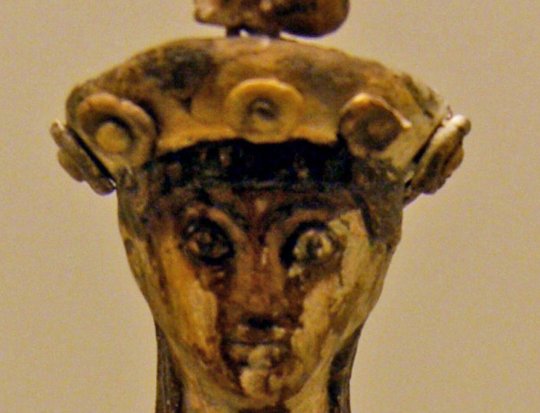
And here’s a close-up of the Boston Goddess’s face:
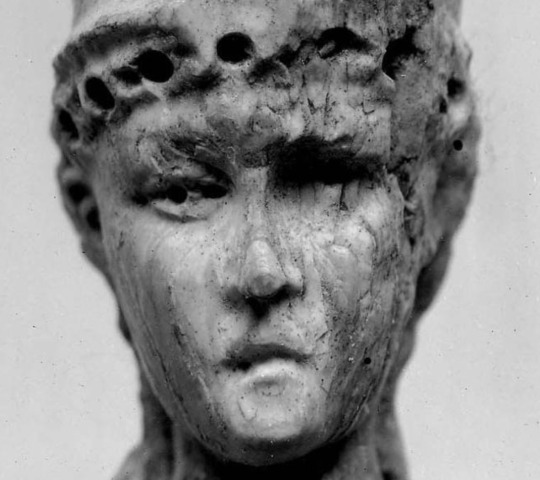
And here’s the face of a now-probably-debunked “Minoan” goddess at the Royal Ontario Museum (read more about her here):
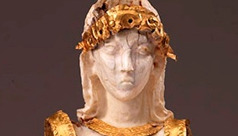
To cut to the chase, eventually they did radiocarbon testing on the Boston Goddess, and the ivory was found to date from between 1420 and 1635 CE. (Not BCE. CE. As in the Renaissance.) A similar figurine, the Seattle Boy God, is made from ivory that's about 500 years old. That in itself is pretty fascinating! They were using old ivory for the forgeries.
What do these proven and suspected fakes have in common? Well, among other things, their very Victorian facial features: inset eyes, small pouty mouths, delicate noses.
Spoiler for where I’m going with this: There are reasons why the Minoans were such an archeological craze, and those reasons are highly political. Because of the ways in which a very specific agenda shaped it, fakes that showed people what they wanted to see were accepted as real (and in some cases, are still sort of accepted as real), and we can't trust a lot of what we supposedly "know."
In Part 2: Bagging On Sir Arthur Evans Forever.
#archaeology#atlantis#minos#crete#minoans#arthur evans#white supremacist archaeology#snake goddess#art forgery#minoan
65 notes
·
View notes
Text
MY IKEMEN VILLAIN OC!
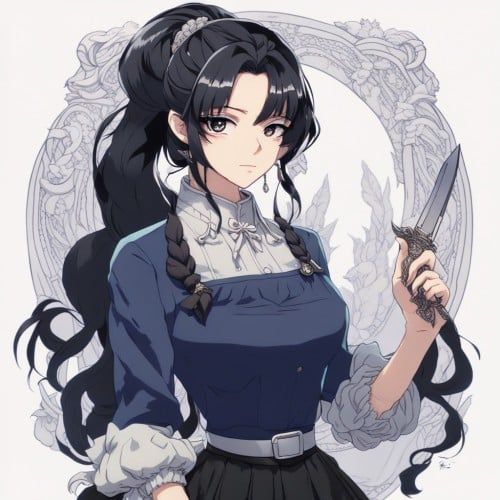
Image credit - Ai image generator
Name - Kairavi Parvati Woods
Birthday - 27 September
Affiliation - Under the queen (formerly) The Crown (Current)
Fairy tail Curse - The Jungle Book - Kaa the snake
Hobbies - Art, Reading
Talents - Has a good reflex and Cooking
Favorite Food - Stir-fried Indian rice
Hates Food - Food that takes too much effort to eat
Dislikes - Too much complications
Weapon - Knives or Short swords
Occupation - Manager at her family's business
______________________________________________________________
"A woman who is an excellent assassin, with a bright smile and charming personality. She is the only female who has joined The Crown as a 'cursed' individual due to her gender. Initially, she worked under the queen as an assassin until Victor offered her a position within the crown, complete with a good salary and accommodations, of course. She possesses a charismatic personality that captivates many, using it to charm and lure her targets. Due to her curse, she possesses the power of hypnotism and silent movement, which makes her an exceptional assassin. Additionally, she is immune to many toxins.
Her tragic end would come from being killed by her own schemes.
She has half Indian Royal blood and half English heritage. Her mother hails from India, having married her father for political reasons. She also has an older brother who holds a noble title and is acquainted with William and Elbert."
"She gets along with almost everyone, but she has managed to annoy Jude by calling him many names and teasing him, especially about his weak lungs. She and Harrison share the common interest of mystery and thriller books. She is not a morning person and really needs coffee, so Victor always makes sure she gets her coffee when she arrives for breakfast (where she has to be dragged out of bed).
She has been teaching Victor about Indian dishes, which are her specialty."
11 notes
·
View notes
Text
Resource Masterlist: Indian Art

Cheap/Free resources:
Wkipedia:
Wikipedia of Indian Art: I'll recommend reading the subtopics from bottom up; it seems more relevant that way!
Wikipedia of Indian Painting: once you go through this article you should further look into whichever style you like, and learn it in depth. It also has links to vernacular art.
Rasa: the classical theory of Indian aesthetics
From Archive.Org (maybe scholarly and/or illustrative. In case illustrations are not there, simply Google them for reference):
Stone Age Painting in India by Romert Brooks
The arts of India from prehistoric to modern times by Ajit Mookerji (If you have no idea about Indian arts, START HERE; it's a short book full of illustrations)
Rajput painting : romantic, divine and courtly art from India by Ahluwalia, Roda
Indian Painting by C Sivaramamurti
South Indian Paintings by C Sivaramamurti
Approach to nature in Indian art and thought by C Sivaramamurti
[There are many books on Indian art, architecture and sculpture by C Sivaramamurti on Archive.org. It's basically a goldmine.]
Kalighat : Indian popular painting, 1800-1930 by Balraj Khanna
Art of modern India by Balrak Khanna [Again, you can check out other titles by Khanna.]
Indian Textiles by John Gillow
Traditional Indian Textiles by John Gillow
South-Indian images of gods and goddesses by HK Sastri
Myths and symbols in Indian art and civilization by Heinrich Zimmer (no illustrations)
The art of Indian Asia, its mythology and transformations by Heinrich Zimmer (with illustrations)
History of Indian and Indonesian art by Ananda Coomaraswamy
A Concise History of Indian Art by Roy C Craven
Deccani Painting by Mark Zebrowski
Indian Folk Art by Heinz Mode; Subodh Chandra
Women of India by Otto Rothfeld (this isn't about art but has few informative illustrations on regional costumes of women)
Dress And Ornaments In Ancient India by Mohini Verma and Keya Bawa
Classical dances and costumes of India by Ambrose, Kay
Cultures and Costumes of India and Sri Lanka by Kilgallon, Conor (o course i had to see other books on costumes)
Studies In Indian Painting by DB Taraporevala
Five Thousand Years of Indian Art by Hermann Goetz
Indian Painiting by Philip Rawson
The Art of Tantra by Philip Rawson
MS Randhawa (different books on Punjabi paintings Basohli, Kangra, Guler and General Themes in Indian Painting)
The imperial image: paintings for the Mughal court by Beach, Milo Cleveland
Wonders of nature : Ustad Mansur at the Mughal court by Dāśa, Aśoka Kumāra
Imperial mughal painting by Welch, Stuart Cary
Painted delight : Indian paintings from Philadelphia collections
India : life, myth and art by Ram-Prasad, Chakravarthi
The heritage of Indian art by Agrawala, Vasudeva Sharana
The adventures of Rama : with illustrations from a sixteenth-century Mughal manuscript
Indian paintings from the Punjab Hills by WG Archer
Art in East and West by Rowland Benjamin
Stella Kramisch (An American art historian and curator who was a leading specialist on Indian art, including folk art, for most of the 20th century. Also a Padma Bhushan awardee.)
The transformation of nature in art by Coomaraswamy, Ananda K
Books available on Libgen:
Art Of Ancient India : Buddhist, Hindu, Jain by Huntington and Huntington
The New Cambridge History of India, Volume 1, Part 3: Mughal and Rajput Painting
Myths and Symbols in Indian Art and Civilization by Heinrich Zimmer
Four Centuries of Rajput Painting: Mewar, Marwar and Dhundhar Indian Miniatures from the Collection of Isabelle and Vicky Ducrot
Ajanta by Yazdani
The Aesthetic Experience Acording to Abhinavagupta
TheHeritageLab is a free website to connect you to cultural heritage through stories, public engagement programs, campaigns, and free-access content.
Also if you're in Delhi, do consider getting a membership of Indira Gandhi National Centre for the Arts (IGNCA) library.
Folk art:
Folk art is an entirely different area that deserve a post of its own. But i love them so here is a long list by Memeraki.com. You can Google each and then look more into what you like. This website also offers very cheap courses in traditional Indian arts by the hidden and disenfranchised masters themselves! It's doing a great work in giving them a platorm. I myself have taken the Mughal Miniature course here. You can consider it.
Illustrated Books:
Note: These are coffee table books with beautiful illustrations that you'd love to looks at.
The Night Life of Trees: In the belief of the Gond tribe, the lives of humans and trees are closely entwined. A visual ode to trees rendered by tribal artists from India, this handcrafted edition showcases three of the finest living Gond masters. THIS YOUTUBE LINK shows the making of the book. The channel also features other works of Gond art.
An Unknown Treasure in Rajasthan: The Bundi Wall-Paintings: This book celebrates the surviving wall-paintings at Bundi by presenting a stunning photographic survey
Painting In the Kangra Valley: Painting in the Kangra Valley is an attempt to survey the painting styles of Guler and Kangra, which flourished in the 18th and 19th centuries. The painting activity began with Kashmiri painters (...)
Indian Painting: The Lesser Known Traditions: India has an astonishingly rich variety of painting traditions. While miniature painting schools became virtually extinct with the decline of aristocratic patronage, a number of local vernacular idioms still survive and continue to develop.
Madhubani Art: Indian Art Series: Madhubani art's origin is believed to go back to the ancient era of the Ramayana, when the town was decorated by inhabitants of the region for the wedding of Lord Rama and Sita with elaborate wall paintings and murals (...) Primarily a significant socio-cultural engagement for the womenfolk of Bihar, this art was a welcome break from their daily drudgery.
Reflections on Mughal Art and Culture: Enter the splendid world of Mughal India and explore its rich aesthetic and cultural legacy through fresh insights offered by 13 eminent scholars.
Monsoon Feelings: A History of Emotions in the Rain: Through a series of evocative essays exploring rain-drenched worlds of poetry, songs, paintings, architecture, films, gardens, festivals, music and medicine, this lavishly illustrated collection examines the history of monsoon feelings in South Asia from the twelfth century to the present
Sita's Ramayana shifts the point of view of the Ramayana - the saga of a heroic war - to bring a woman's perspective to this timeless epic. Illustrated with Patua painting.
Adi Parva: Churning of the Ocean: a graphic novel that is a revisionist retelling of some of our oldest tales which have inspired and guided generations of people.
Ajit Mookerji, Sivaramamurti and Craven Roy's books are concise from where one can begin and then delve deeper into the subject of interest. Reading history and myths behind the work for context and listening to music from the given time/region alongside will make the exploration even more enjoyable!
#indian aesthetics#indian art#master post of indian art#desi#desi culture#desi aesthetic#indian dark academia#indian art history#indian art history books#indian art books
26 notes
·
View notes
Note
HAPPY NEW YEARS EVE MEGGY!!!!! I come bearing another basket of thought/thots straight from the pantry (lol).
Lets just say you and Rhett keep a very well stocked collection of books (lol). Rhett is a voracious reader, especially during the winter when there's not alot of chores to be done. He'll eat up books like they're popcorn and it actually got to the point where his room was starting to look like a used bookshop.
One summer, the Duttons came down from Bozeman and Kayce, Rip, Beth, Monica, John and Royal all helped you renovate an abandoned barn on the property just up the little path from the house and my God did that thing need some serious TLC. But by the time you guys were done the very next summer, you had the best little library on the property!
The Cozy Corner was always the first thing you would see when you'd come in and just behind it was the little kitchen area. The corner had a big giant throw rug and a space for the woodstove, a big stretch of window seat with drawers underneath and low stretches of shelves for some of the little, little children's books you've collected from Rhett's childhood. Of course he still has Goodnight Moon, Peter Rabbit and Winnie The Pooh which he passed down to Amy when you guys adopted her, but there's also some little paperbacks there too, such as Matilda, James And The Giant Peach, Charlie And The Chocolate Factory and of course, Rhett's absolute favorite, The Indian In The Cupboard. One story that Amy absolutely loves is called She Was Nice To Mice and it's about the little mice that lived in the court of Queen Elizabeth I and all the shenanigans they caused (lol).
Oh but of course there are stacks and stacks and stacks of books on the shelves upstairs that are suited for everybody in the family. Royal absolutely loves reading The Hobbit to the babies and they think it's hilarious that he reminds them so much of Beorn (lol). You guys have all the Lord Of The Rings books complete with the illustrations and everything. During the summer, you and Rhett will read Treasure Island, The Swiss Family Robinson, Robin Hood and Peter Pan to the babies and they absolutely EAT IT UP!! Tatum and Tanner, your twin boys are obsessed with Treasure Island and anything that even remotely resembles The Goonies (lol).
The girls love the Grimm's Fairy Tales even though some of the endings are a little bit above the PG rating, they love Sleeping Beauty, Cinderella, Red Riding Hood and Rapunzel. Muchie Lal was always a favorite of theirs which is about a little prince in India who was raised by a nine-headed cobra. Snow White is another favorite of theirs along with The Goose Girl, Diamonds and Toads and The Princess And The Frog. Rhett even managed to get a copy of The Arabian Nights and all the babies love that on top of everything else. The boys can't get enough of Sinbad The Sailor while Aladdin was always a favorite of everyone's (lol).
At Halloween it's almost always Dracula and Frankenstein. The babies might not be at the most appropriate age for it, but you and Rhett couldn't resist when your boys all came running to the cozy corner one day with a copy of Dracula (lol). Rhett will even read them a parody of Goodnight Moon which is called Goodnight Goon and the boys always say goodnight to the monsters under the bed after that (lol).
Dinotopia by James Gurney has always been another favorite of everyone's. The babies love the illustrations in them and how colorful they are and almost always wanna see what it's like to ride on a dinosaur. The babies have even drawn in their own little notebooks as if they were in the world of Dinotopia, pretending to explore and keep track of the dinosaurs and after a while they got really good at it. Even their teachers are a little surprised that they can draw so well at such a young age (I firmly believe that you and Rhett sent the kiddos to one of those hippie schools that emphasizes drawing, outdoor play and all the creative arts, lol).
Meggy there's alot more I could add to this but I don't think I'll have the space for it (lol).
HAPPY NEW YEARS EVE MY DARLING <3 hehe yay! more thoughts & thots :) i can’t wait to read them !!!
~ first, i love wifey & Rhett having a book collection! second, i love Rhett being an avid reader & bookworm! i could honestly see that under the rough & toughened cowboy persona! the winter is certainly the best time to read cause you can just curl up under a bunch of blankets, get cozy, & crack open a good book :) Rhett’s room looking like a little bookshop is the cutest thing i’ve ever read please !!!
~ ooh! i remember you bringing this up over our messages & Mary can i say, it’s the best thought ever!! i love the idea of everyone getting together to renovate the barn into a library! like who wouldn’t want that?! it’s just so awesome☺️ lovin’ the name the Cozy Corner! the way you described it sounds so warm & homey :,) the kids books! OMG! i remember Goodnight Moon, Peter Rabbit, & Winnie the Pooh so vividly!! such staples in my growing up🥹 Matilda still remains one of my favorite films of all time & i enjoyed the book too! Charlie & the Chocolate factory being Rhett’s fav just makes so much sense to me ?! idk, but it def works! ahh! The Indian in the Cupboard makes me think about elementary school !! i miss being little haha :)
~ you already know how I feel about Lord of the Rings! im a huge fan hehe🤭 & i love that it’s included in their book collection! also love that Royal reads the Hobbit to the babies & i could even picture him doing different voices for each of the characters 🤣 he could do a spot on impression of Gandalf, mark my words! the twins & Rhett being super into Treasure Island is just so great too !! Robin Hood & Peter Pan are such classics & absolutely essential to the collection :)
~ yess! the Grimm Fairytales are just awesome & i really love all the different princess stories !! ooh Dracula & Frankenstein during Halloween time couldn’t be more perfect! i also imagine all the kids getting together to read spooky stories & cuddle up like a bunch of scaredy cats when they hear a noise, but it’s only because they are literally in an old barn & it’s destined to make all sorts of creaky sounds😭 haha! Goodnight Goon i’ve heard of, it definitely sounds cute! & aww, the boys saying goodnight to the monsters under their bed is so adorable! :,)
~ Dinotopia sounds really cool! i actually had to look it up real quick to see what it was all about & i have to say, the illustrations are just incredible! i could see why they would love the book so much!! the babies getting into drawing because of this story?! Mary! that is so sweet 🥹 the hippie school thing is soo true! i could totally picture Rhett & wifey sending the kids to it!! hehehe!
Mary, thank you so much for these lovely little thoughts! they brightened my day & i just loved reading them like always 🥰 i hope you have a wonderful New Year’s Eve my love! 💗
3 notes
·
View notes
Note
Do you have any nonfiction recs? 👀
HELLO VITA hiii how are youuu <333 and yep!!!!
since you haven't asked for a particular genre of non fiction i'll be a little all over the place but if you have some area in particular let me know!!
the emperor of all maladies: a biography of cancer - siddhartha mukherjee. (science) exactly what it says on the tin. i read this probably a little too young under weird circumstances but it was SHOCKINGLY riveting for kid me. absolutely fascinating, and really well written for a book about...well, basically cancer! i don't know how to sell it except to say it still remains one of my most favourite books ever
ants among elephants: an untouchable family and the making of modern india - sujatha gidla. (autobiography | history) it's a biography about a dalit christian family from andhra pradesh and it's super compelling. obviously i can't speak with total authority about what that experienceTM is since it's soooo varied but AS someone from a dalit christian family from andhra pradesh it felt so so true down to minute details. the naxalite movement and its depiction part of the book is more debated in critic circles but even then it is still an absolutely fascinating look into that complex history
curfewed night - basharat peer (memoir). peer is a journalist whose family was personally affected in the 90's during insurgency in indian-administered jammu and kashmir. good place to start to learn more about the conflict. it's a short read but super powerful. didn't know haider was partially adapted on this until recently!
a bunch of non-fiction graphic novel recs because i love non fiction graphic novels: alison bechdel's fun home i loved it soo soo so much and it kind of changed me in the last year of school lol, it's about many things but especially about her complicated father. persepolis by marjane satrapi, a wonderfull read on iran and feminism and satrapi herself. palestine by joe sacco which is about palestine through the eyes of joe sacco, a journalist, and gives you a glimpse of palestinian history as well as the conflict and its present day ramifications. munnu by malik sajad! this is also an autibiographical book on kashmir and an excellent importantl read. the author portrays the kashmiri people as the endangered hanguls. the concept was based on art spiegelman's maus which of course if you haven't read is itself an automatic recommendation.
a few non fiction essay collections that live rent free in my brain - arundhati roy's entire oeuvre of course, but especially an algebra of infinite justice (the collection, not just the essay of the same name). the education of a british protected child by chinua achebe is excellent in many brilliant ways, but especially the essays on language and literature are <33
#this is all over the place fgcfvecedgc but yeah!!! just a few that sprung to mind lmk if you have any genre in particular#bookclub#doughfaceddcpig
22 notes
·
View notes
Text


Went to visit my parents, which often means checking my childhood art. A lot of it is very hard to scan, because it has faded away so much with the years, but I'll try to digitally enhace the contrast, and share some later.
Ancient art from 2002, from some clearly Jungle Book inspired comic series I did back in my preteen and teen days. Why yes, I'm old.
The gray wolf, Asta, actually made it to the very early dA days!
---
Some history:
Back in 1995 or 96, as a kid, I asked for this book as a birthday gift: https://http2.mlstatic.com/D_NQ_NP_842587-MLA27484653922_062018-O.webp . I was obsessed with tigers back then (with foxes before that!) and well, there was a tiger on the cover, plus tiger info inside the book. It detailed the fauna of each continent, and while my most visited section was Asia, I remember being saddened to see that South America, where I live, has the least amount of pages of all. It mentioned being the most biodiverse continent, but it still made a point to describe our fauna as "lacking in large animals". This bothered me, back then.
Those days, I lived where I was born, in the Argentine North-East. In the humid Chaco region, which is insanely biodiverse, and even more so back in the 90's, when it was less urbanized than it is today. Now, I've been living in the South-West, AndinoPatagonico forest region for almost one decade and half. A less biodivrse area, albeit rich in regional endemisms.
In my childhood, I'd turn rocks and wood pieces just to check the diversity of all sort of invertebrates below (and yes, it was often very gross). I'd also pick flowers, fruits and herbs apart, to see how they were built.
I also remember the absolutely insane diversity of frogs and reptiles, not to mention the birds (which sadly I'd not look at much , in my childhood) that could be found in our patio... it was a given, and only in retrospective I come to appreciate the insane amount of species, I know I'd have a field day nowadays!
Anyway: my childhood house and town/area were insanely formative to me, when it comes to appreciating local/South American fauna, even if I started out with Asian-based characters.
And yes, I had a ringed-tail Lemur character way before the Madagascar franchise existed. He was, of course, created after getting that book (character was created in '97 or '98). My logic back then was, Asia and specifically India shared a lot of species with Africa (rhinos, elephants, lions, leopards, cheetahs, hyenas, jackals, etc) so, why not lemurs? Getting a wee bit older (read: teens) I decided the lemur was an escaped former pet or whatever, but never adressed it in the comics becuase I didn't care.
So yeah. Always fun to revisit childhood art! I was 15-16 in 2002.
#ANCIENT#2002#Pre-social media#pencil art#Grayscale#FormativeYears#ChestOfMemories#Asianfauna#Also a lemur#The wolves in this comic didnt look like or had the actual size of indian wolves either whoops
16 notes
·
View notes